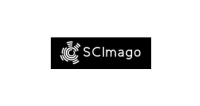USE OF A HOMEOPATHIC PRODUCT IN DOGS REDUCES THE NEGATIVE EFFECTS OF CANINE ATOPIC DERMATITIS
DOI:
https://doi.org/10.5380/avs.v1i1.80376Palavras-chave:
Canines, Dermatitis, Homeopathy, Oxidative stressResumo
This study aimed to determine whether a homeopathic product formulated based on Hepar sulfur, Rhus toxicodendron, Graphites, and Urtica urens would prevent atopic dermatitis in dogs. Ten male beagle dogs were used, divided into two groups with five repetitions per group. The control (CO) animals received a diet with 0.5 mL/day of placebo for 30 consecutive days in a preventive manner, and we later added ethoxyquin at 0.4 mg/day. The treated group (TRA) received a ration with 0.5 mL/day of homeopathic for 30 consecutive days as a preventive, and we later added ethoxyquin at 0.4 mg/day. Blood samples were collected on days 1, 30, and 40 to analyze antioxidant and oxidant status. In an ethogram, the presence of a crusted lesion, alopecic lesion, or hair loss were evaluated at three timepoints: pre-challenge, 5, and 10 days post-challenge. No lesions were observed in the pre-challenge period. Dogs fed the homeopathic on day 5 after challenge presented 40% less crusted lesion and 60% less hair loss than the control. Nitric oxide (NOx) and reactive oxygen species (ROS) levels increased over time in both groups (P < 0.001). On day 40 of the experiment, lower levels of NOx (P < 0.001) and ROS (P < 0.025) were observed in the TRA group than in the CO group. In contrast, glutathione S-transferase activity increased over time in both groups (P < 0.001); however, this increase on day 40 was more significant in the dogs in the treated group than in the control (P < 0.010). We conclude that the preventive addition of homeopathic reduced the incidence of skin lesions and prevented oxidative stress caused by canine atopic dermatitis.
Downloads
Publicado
Como Citar
Edição
Seção
Licença
Autores que publicam nesta revista concordam com os seguintes termos:
- Autores mantém os direitos autorais e concedem à revista o direito de primeira publicação, com o trabalho simultaneamente licenciado sob a Creative Commons - Atribuição 4.0 Internacional que permite o compartilhamento do trabalho com reconhecimento da autoria e publicação inicial nesta revista.
- Autores têm autorização para assumir contratos adicionais separadamente, para distribuição não-exclusiva da versão do trabalho publicada nesta revista (ex.: publicar em repositório institucional ou como capítulo de livro), com reconhecimento de autoria e publicação inicial nesta revista.
- Autores têm permissão e são estimulados a publicar e distribuir seu trabalho online (ex.: em repositórios institucionais ou na sua página pessoal) a qualquer ponto antes ou durante o processo editorial, já que isso pode gerar alterações produtivas, bem como aumentar o impacto e a citação do trabalho publicado.













